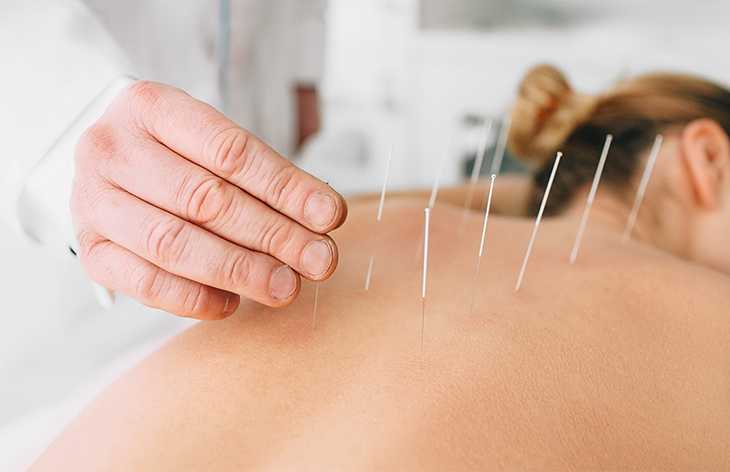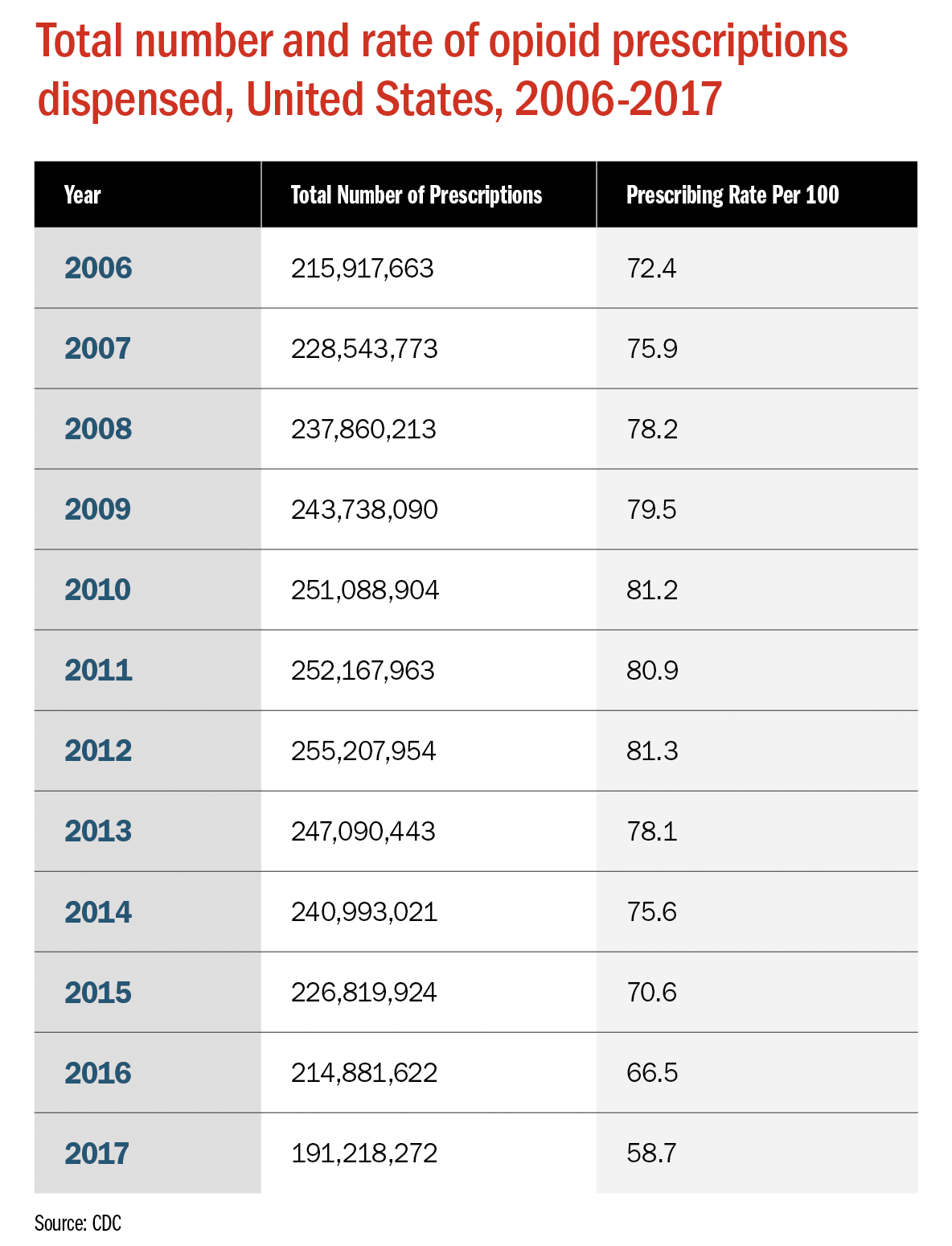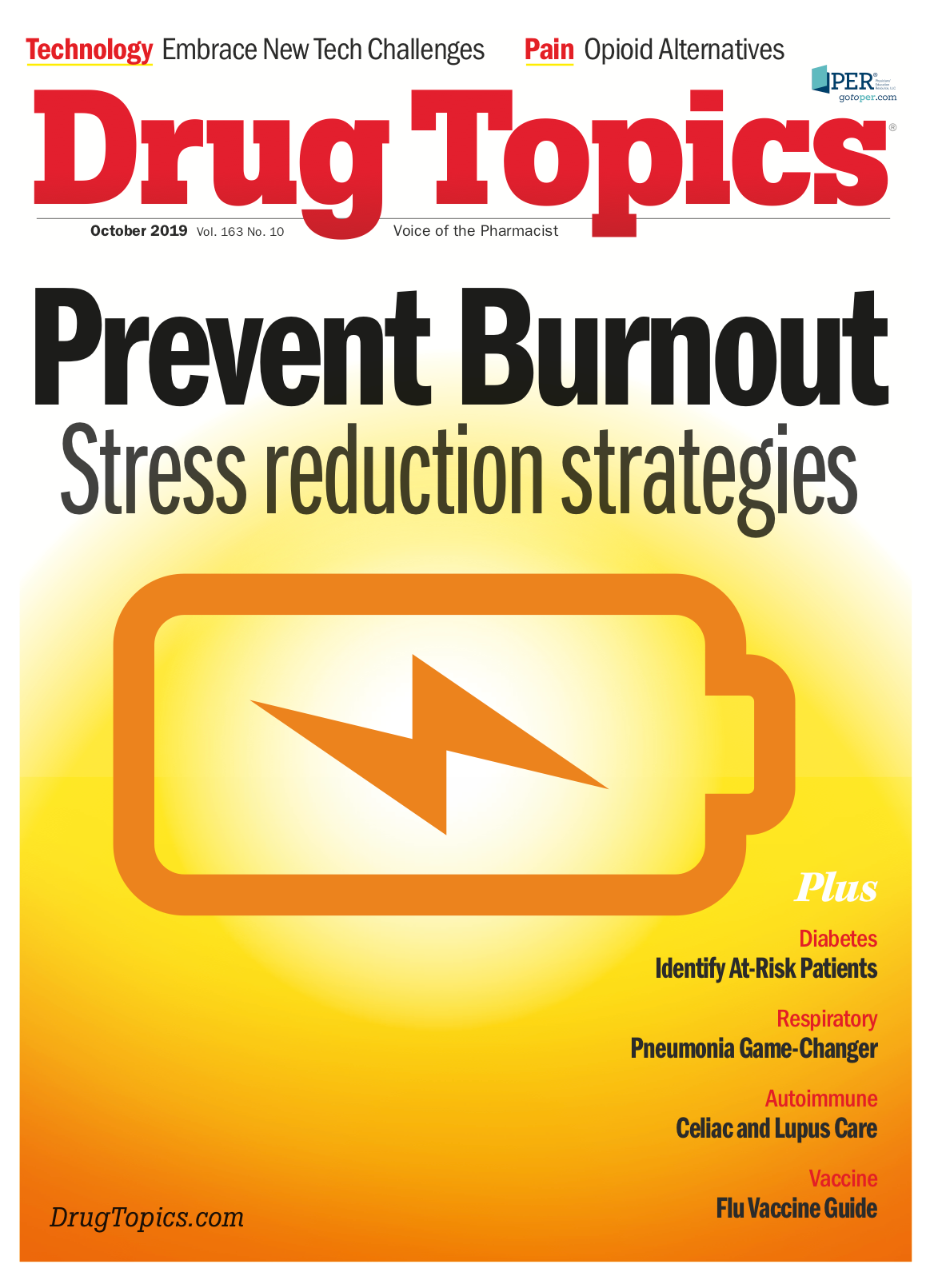Alternative Approaches to Opioids
New and old non-opioid pain management solutions.

Total Number and Rate of Opioid Prescriptions Dispensed in the U.S. 2006-2017; Source: CDC

As the opioid crisis rages on, the healthcare industry is looking for alternatives to pain management. The crisis has spurred people from all over the industry, from pharmacists to physicians to healthcare technology companies to pharmaceutical manufacturers, to reconsider their approach.
This type of approach is undoubtedly necessary: Deaths related to opioid doses still kill about 150 Americans every day, according to the National Institutes of Health. One recent study found that Americans are prescribed opioids far more often for surgery than in other similar countries-in Sweden, 11% of patients received opioids after surgery, compared to over 70% in the United States. This is a problem, because around 21 to 29% of patients prescribed opioids develop an addition.
The good news, however, is that opioid prescription rates are declining. According to the CDC, opioid prescribing rates have been falling in recent years, from a high of 81.3 prescriptions per 100 persons in 2012 to 58.7 prescriptions in 2017.
Trending: The 10 Best-and Worst-States for Vaccinations
Lowering prescribing rates, however, only solves one part of the equation. Patients still need a way to cope with pain, leading many to consider alternate solutions. From acupuncture to novel electrotherapies, here are some of ways healthcare is rethinking pain management.
Acupuncture
One of the innovative tools used to move patients away from opioids isn’t so new or innovative at all.
Acupuncture is old-very old. Archeologists have found evidence of sharpened bones and rocks that they believe were used for acupuncture as long as 8,000 years ago. Now commonly associate with traditional Chinese Medicine, the practice was and has been somewhat on the fringes in Western medicine (and for a significant length of time in China, it was outlawed in 1929 and reinstated in 1949).
In the 1990s, however, acupuncture began to receive more attention. In a 1997 Journal of the American Medical Association article, the National Institutes of Health (NIH) gave “cautious approval of some applications of acupuncture.” After looking at the research, NIH concluded that there is evidence the practice helps with post-operative nausea and vomiting, as well as those same symptoms caused by chemotherapy and post-operative dental pain.
Currently, the NIH website says of acupuncture: “Although millions of Americans use acupuncture each year, often for chronic pain, there has been considerable controversy surrounding its value as a therapy and whether it is anything more than placebo. Research exploring a number of possible mechanisms for acupuncture’s pain-relieving effects is ongoing.”
Read More: Lefamulin Could Be Vital in the Pneumonia Fight
But with the opioid crisis comes a need for alternative, non-addictive approaches to pain management, and many believe acupuncture could be a viable solution.
Perhaps the greatest indication that acupuncture has hit the mainstream is a 3-year program sponsored by the Defense and Veterans Center for Integrative Pain Management (DVCIPM), part of the Department of Defense focusing on pain relief. The program trained over 2,800 clinicians-including a number of pharmacists-in what’s known as battlefield acupuncture (BFA).
BFA was developed by Air Force physician Richard Niemtzow in 2001 as a method of relief for chronic pain. It was first tested on U.S. soldiers in Iraq and Afghanistan for efficacy-Niemtzow called it BFA because unlike other therapies, it is easy to administer and transport. It works by putting small studs in specific points on the ear in the hope that they will relieve pain. While Niemtzow says, according to a recent Military Times article, that he hopes the treatment could provide alternatives to opioids and that he has seen significant, helpful results in pain patients, this is just one new tool in the arsenal against pain-often encouraging patients to seek other complementary treatments or oral therapies.
Another sign that acupuncture may be hitting the mainstream comes from CMS, which is currently considering covering acupuncture to treat chronic lower back pain under Medicare.
Shital Parikh Mars, CEO, Progressive Care, a pharmacy and technology company based in Hallandale Beach, FL, says “Medicare beginning to open these doors for patients is a great thing, because physical therapies like chiropractic care, acupuncture, and massage are less toxic to the body when performed by fully qualified professionals. These therapies can help manage pain before the patient seeks opioid treatment or even does bodily damage from long term frequent NSAID use.”
Trending: Lupus and Celiac Disease: What Pharmacists Need to Know
Mars’ experience with acupuncture is personal: she suffered from stress-induced neck and back pain, of which acupuncture “worked better for me than alternatives that I have tried.” She says healthcare in the future will likely being experimenting with these alternative therapies, and it would “behoove most standard medicine practitioners to open up their service offerings and begin presenting these alternative treatments to their patients. But first and foremost, education is necessary so that both doctors and patients understand the diagnosis, what options are available, what success and results look like, treatment durations, risks, costs, etc.”
New Technologies
Looking to the past isn’t the only available option for those looking for opioid alternatives.
One of the new trends for pain relief seekers is the use of electrical therapy to stimulate nerves. A recently approved example is Nerivio from Theranica. Nerivio is an app-connected device worn as an armband that utilizes Remote Electrical Neuromodulation (REN) to treat migraines. The device is worn for 45 minutes on the upper arm where it stimulates mainly small skin nerves.
The results speak for themselves: in a study published in the Journal of Headache and Medicine that compared REN with traditional, patient-preferred therapies, researchers found that 2/3 (66.7%) of patients undergoing REN therapy experienced relief compared to 52.5% of those who underwent traditional therapies. Based on these findings, the researchers concluded the REN is an effective alternative and may even be worth looking at as a first-line treatment.
Other migraine technologies relying on electrical stimulation include Cefaly, sTMS mini, and gammaCore.
Read More: 5 New Diabetes Technologies and Treatments
This is good news for patients looking to get away from opioids or other medications. While migraine-specific drugs-as well as more common approaches like OTC NSAIDS (which are themselves responsible for a large number of side effects)-are available, opioids continue to be prescribed for migraines at high rates, according to the American Headache Society.
Perhaps it’s unsurprising then, that the market for this kind of technology is expected to boom in coming years. While issues of reimbursement and access still exist, one report from Global Market Insights found that the worldwide market for neurostimulation devices is set to hit $16 billion by 2024, growing at a CAGR of 15%. While part of that growth is for non-pain related treatments for neurological conditions (e.g., Parkinson’s disease, epilepsy, dementias), much of that growth will be driven by patients in pain resulting from failed back surgery, as well as for chronic pain sufferers.
